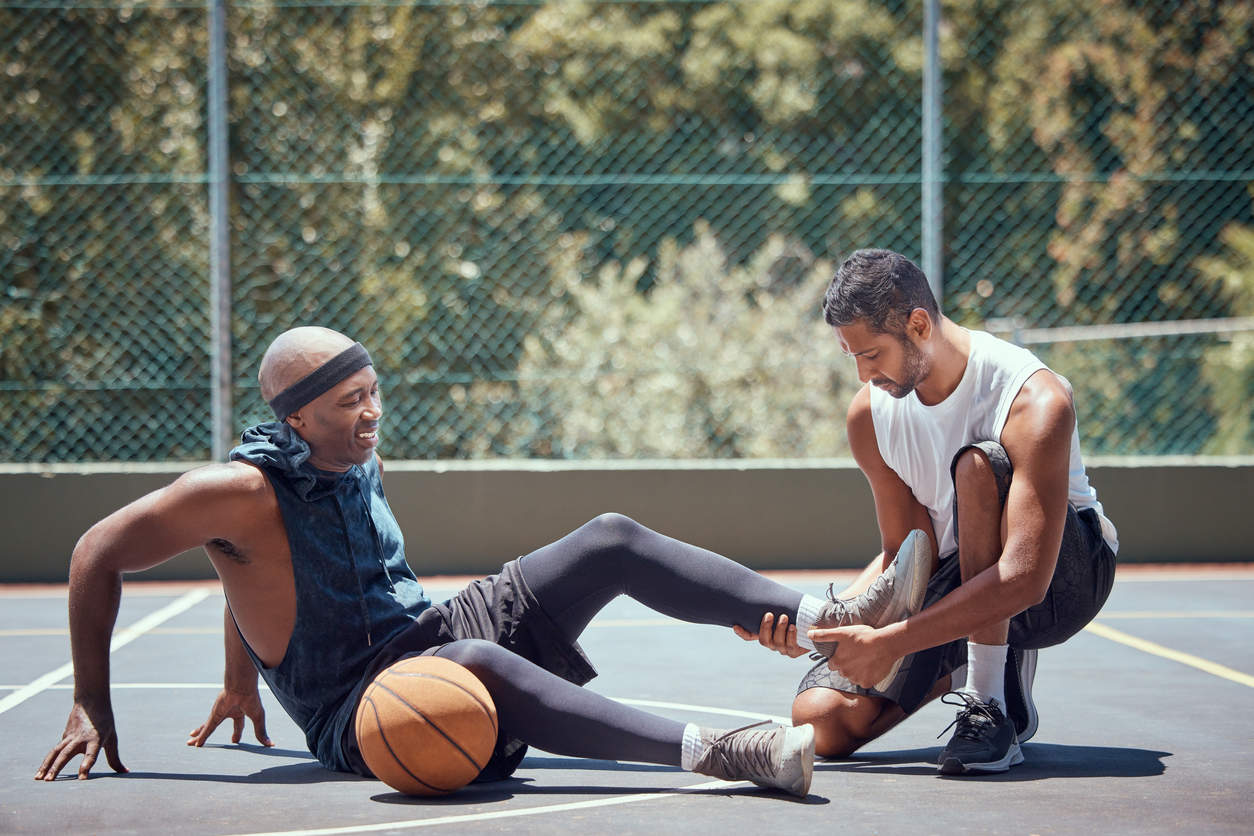Staying active is essential to overall health and wellness, but sports and exercise can result in injury. Luckily, there are ways to prevent these injuries and treatment options to get you and your loved ones feeling better.
Prevention
The best way to prevent sports injuries is to prioritize caring for your body before and after physical activity. Here are a few tips to avoid injury:
- Warm up and stretch before getting started
- Prioritize staying hydrated and cool
- Use proper technique and equipment
- Take breaks when needed
- Cool down properly after activity
- Emphasize strength and flexibility in workouts
- Work yourself into shape slowly
- Make sure all previous injuries are fully healed to avoid reinjury
Taking care of your body, in general, can also help prevent sports injuries. Ensure you’re eating enough food, getting enough sleep, drinking enough water, and managing stress to ensure your body feels its best.
Common Injuries
- Bursitis: Inflammation of the small fluid-filled sacs that cushion the bones, tendons, and muscles near your joints.
- Contusion: A bruise, when blood vessels rupture and bleeding occurs under the skin.
- Dislocation: When a bone pops out of the joint socket; usually results in a temporary deformity.
- Fasciitis: Inflammation of the tissue under the skin that surrounds muscles, nerves, fat, and blood vessels.
- Fractures: A broken bone.
- Lacerations and abrasions: A cut or scrape on the skin.
- Muscle cramps: A sudden and unexpected tightening of one or more muscles.
- Sprains: A stretching or tearing of ligaments.
- Strains: A stretching or tearing of a muscle.
- Tendinitis: Inflammation of tendons (fibrous cords that attach muscle to bone).
Treatment
If you suspect you have sustained an injury, the first thing you should do is stop playing and assess the severity of the damage. Many sports injuries can be treated initially at home using the RICE method to reduce swelling and relieve pain.
- REST the injury.
- ICE the injury once an hour for 20 minutes.
- COMPRESS the injury by wrapping it with an elastic bandage, but not too tightly.
- ELEVATE the injury above the heart to decrease blood flow and reduce swelling.
However, if the pain and swelling do not go away after a few days, or you have severe pain, swelling, bruising, an obvious deformity, or you cannot tolerate any weight on the area, you should see a medical professional for treatment. You can visit your primary care physician if the injury isn’t urgent or see an emergency physician if you want to be seen as quickly as possible for serious injuries. Your doctor will likely need to run diagnostic imaging tests to diagnose the damage and start treatment or refer you to a specialist as soon as possible.
All of our Ally Medical Emergency Rooms are prepared to treat major and minor sports injuries, including concussions, sprains, and broken bones, for children and adults of all ages. No appointments are needed, and patients may come in any time–day or night–with little to no wait. If you need immediate medical attention, visit any Ally Medical facility to experience our re-envisioned medical care.



